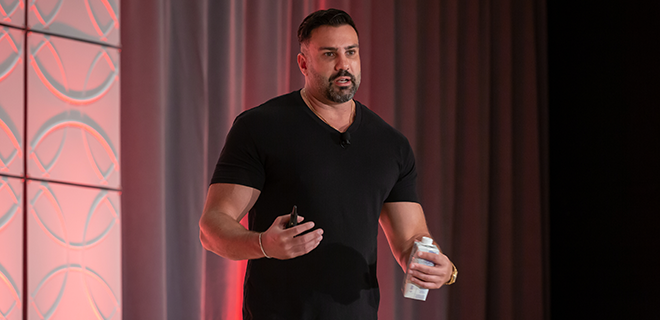
Publisher Forum Montreal was a week filled with gems that revenue and ad ops pros can take back to their own work and put into practice.
To kick off the conference, Complex Networks President, Justin Killion, gave the keynote address entitled, “Justification for Revenue Diversification.”
In his address, Killion detailed the rise of Complex Networks from a streetwear clothing line 20 years ago to a multimedia business with print and online magazines, video streaming, and in-person and virtual events.
The evolution of the company sets a standard for publishers who are looking to broaden their revenue streams within the uncertainty of privacy regulations, ad spend slowdowns, and economic turmoil.
So, what key takeaways can publishers glean from Killion’s keynote?
Building an Audience: Innovation in Fruition
Killion lauded the innovation of Ecko Unltd founder, Marc Ecko, who created an audience by adding hand tags to his clothing. This method allowed Ecko to extract first-party data from his audience. He received their names, email addresses, and phone numbers to send the first edition of what would become Complex Networks’ print magazine that was distributed for free.
In addition, the data collection from Ecko’s audience allowed him to prove to advertisers that the audience who bought his clothes was a valuable revenue generator for a media brand. Since Ecko was marketing to a hip hop and sneaker culture audience that was considered a subculture at the time, advertisers were unsure of their value. But Ecko’s unconventional data collection tactic proved fruitful.
“That first-party data ended up becoming the genesis of what is still Complex Networks’ email list today,” says Killion. “That email list ultimately allowed us to launch the .com and helped us build up our ad inventory.”
The Art of the Pivot: Using Your Built-In Audience
The first pivot for Complex came around 2007 during the housing crash. Online publishing was still a new concept at the time, but Complex saw the benefits of ad revenue on the open web and used it to keep content free.
“At the time, people in the magazine space thought that having a .com in addition to your magazine was a bad idea because you were giving away content that could be in print,” says Killion. “Although, magazines went through a very difficult time because buying ads through print was expensive relative to buying display and banner ads on the website.”
This astute assessment to move to online publishing, which Killion refers to as the first iteration, allowed Complex Networks to thrive through the recession at the time. It was also the company’s first experimental success in diversifying their revenue streams, gaining new ad partnerships, and establishing new models for display, banner, and print ads.
Looking Toward the Future: Everyone Feels the Pinch
Over their decades-long success, Complex Networks has expanded into several iterations that allowed them to diversify their revenue streams.
They developed their brand to include food, music, and sports, pivoted to video to create shows such as Hot Ones and Sneaker Shopping, created licensed product deals like their hot sauce franchise including Hot Ones Pringles, and established derivatives for original premium productions for streaming services like Netflix, Amazon or HBO Max.
Capitalizing on their high fan engagement, Complex also extended the brand into live events, launching ComplexCon in 2016 which merges hip hop and popular culture, street style, food, and music. This deep relationship that the media brand has built with its audience has also given rise to a very profitable ecommerce business.
Killion acknowledged the stress the industry is facing because the third-party cookie is going away. New privacy regulations will affect the revenue of everyone in the advertising ecosystem, but for publishers, Killion asserts the power of diversifying your content to expand your audience and revenue.
“We’ve been very diversified for the last 20 odd years,” says Killion. “There’s a number of different revenue streams that when one thing goes down, we’re able to supplement it with other businesses that we’re in. Just like when the magazine experienced issues and the .com bailed us out of the housing crisis.”